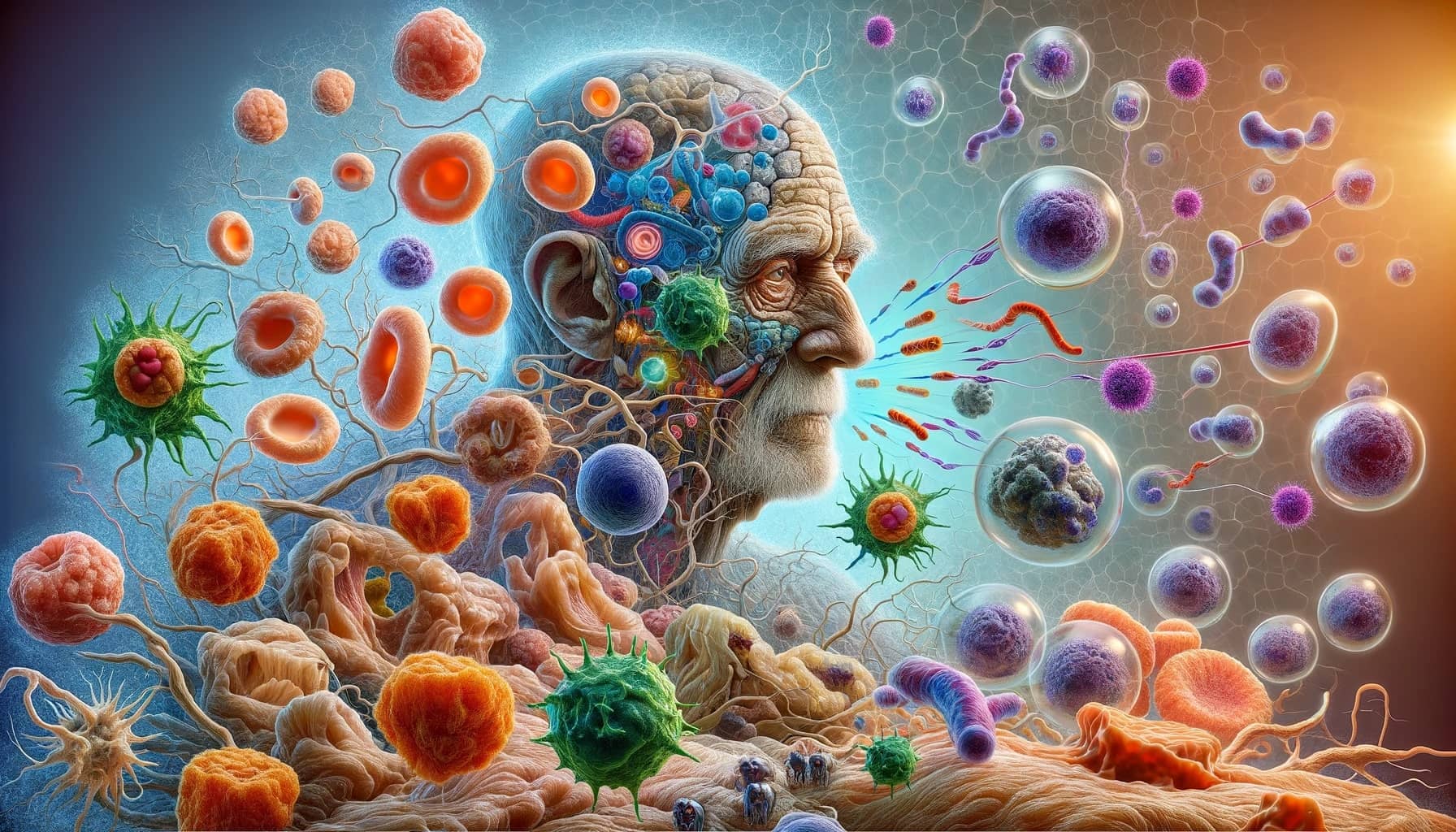
Fighting Hidden Inflammation: The Key to Understanding Aging
As we age, a quiet but significant change occurs in our bodies – an increase in ‘inflammaging.’ This term refers to the ongoing, low-level inflammation that accompanies aging. It manifests in various forms, including heart disease, brain inflammation, arthritis, and spine issues. We can detect this aging-related inflammation through elevated levels of inflammatory substances like cytokines and markers such as CRP in our blood. Particularly, high levels of IL-6 are associated with an increased risk of death from various causes in older individuals.
Immune System Changes and Inflammation
Alongside increasing inflammation, our immune system weakens. Studies on specific types of blood cells in humans and mice reveal this weakening. The rise in TH1 and TH17 cell types contributes to poor disease detection, autoimmune responses, and weakened bodily barrier protections, all fueling widespread inflammation.
Link Between Inflammation and Aging Signs
Various cellular issues drive aging-related inflammation. For example, DNA problems can lead to an increase in inflammatory blood cells, accelerating aging in our heart and blood vessels and linked to mutations that affect gene regulation. Additionally, gene regulation issues, malfunctioning cell processes, or inadequate cellular waste cleanup can lead to an excess of inflammatory proteins.
Thymus Gland Shrinking and Aging
The thymus gland’s shrinkage over time is a major factor in aging-related inflammation. This shrinkage results in fewer new T cells and a less diverse immune response, impeding our body’s ability to combat new infections. However, calorie restriction in humans and certain genetic modifications in mice appear to mitigate this issue.
Focusing on Inflammation in Anti-Aging Treatments
Targeting inflammation could play a significant role in slowing aging in various body parts. Addressing specific T cell issues can alleviate aging-related conditions, with some improvement seen through anti-inflammatory treatments. Moreover, transferring immune cells in experiments has demonstrated both positive and negative effects on aging.
Using Anti-Inflammatory Drugs for Longer, Healthier Lives
Growing evidence suggests that treatments reducing inflammation can promote longer, healthier lives. Blocking specific inflammation markers has enhanced brain function and reduced certain aging immune cells. Researchers are exploring drugs targeting the inflammasome protein NLRP3 for their potential anti-aging benefits. The CANTOS clinical trial revealed that canakinumab could lower the risk of heart disease, diabetes, high blood pressure, and even lung cancer.
The Challenge of Developing Effective Anti-Aging Therapies
Despite these promising findings, developing effective anti-aging treatments remains challenging. For example, the long-term use of anti-inflammatory drugs like aspirin presents both benefits and risks, as recent studies have indicated. The ongoing challenge is to continue refining these treatments to maximize their potential in combating the effects of aging on our bodies.
